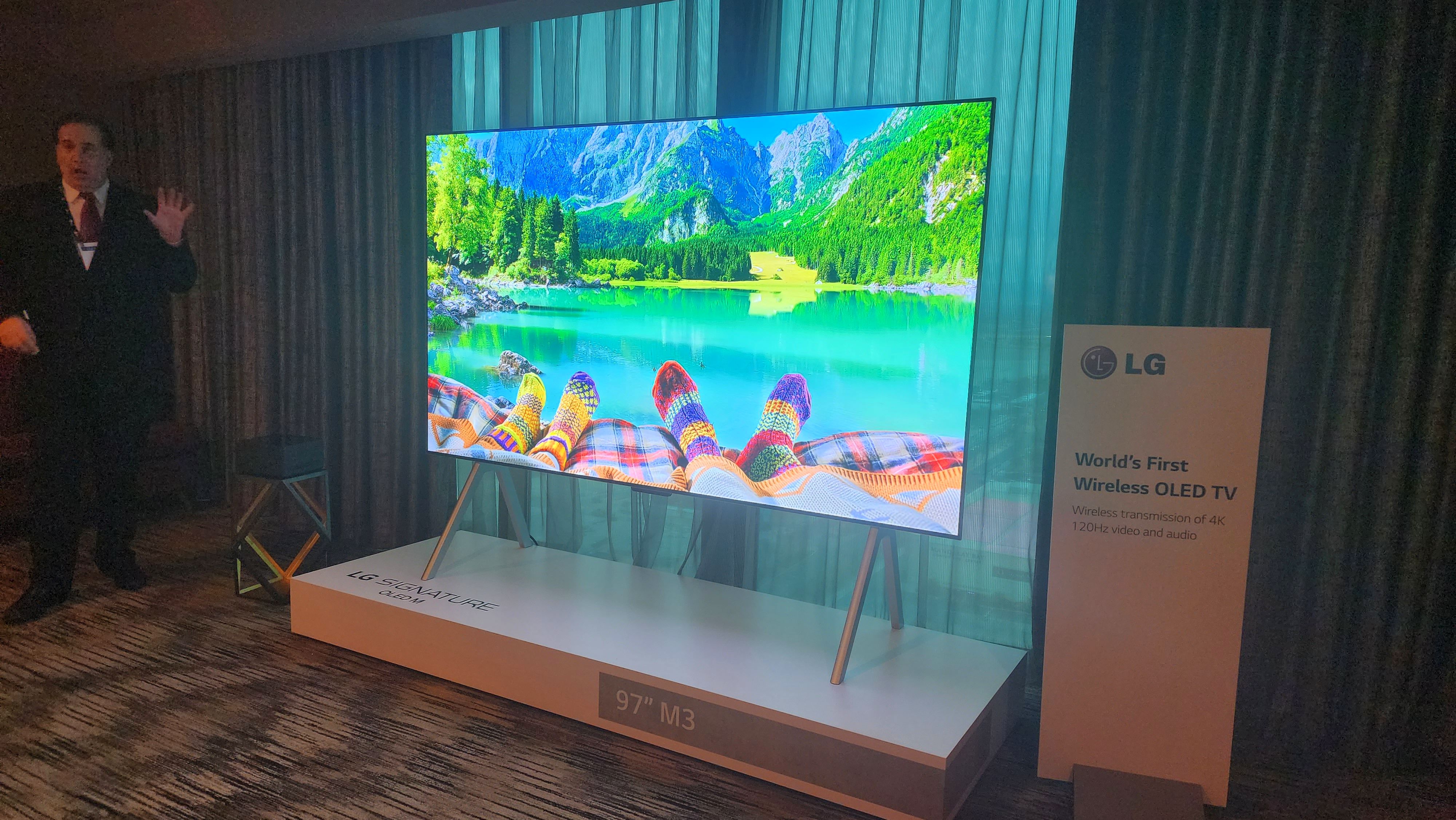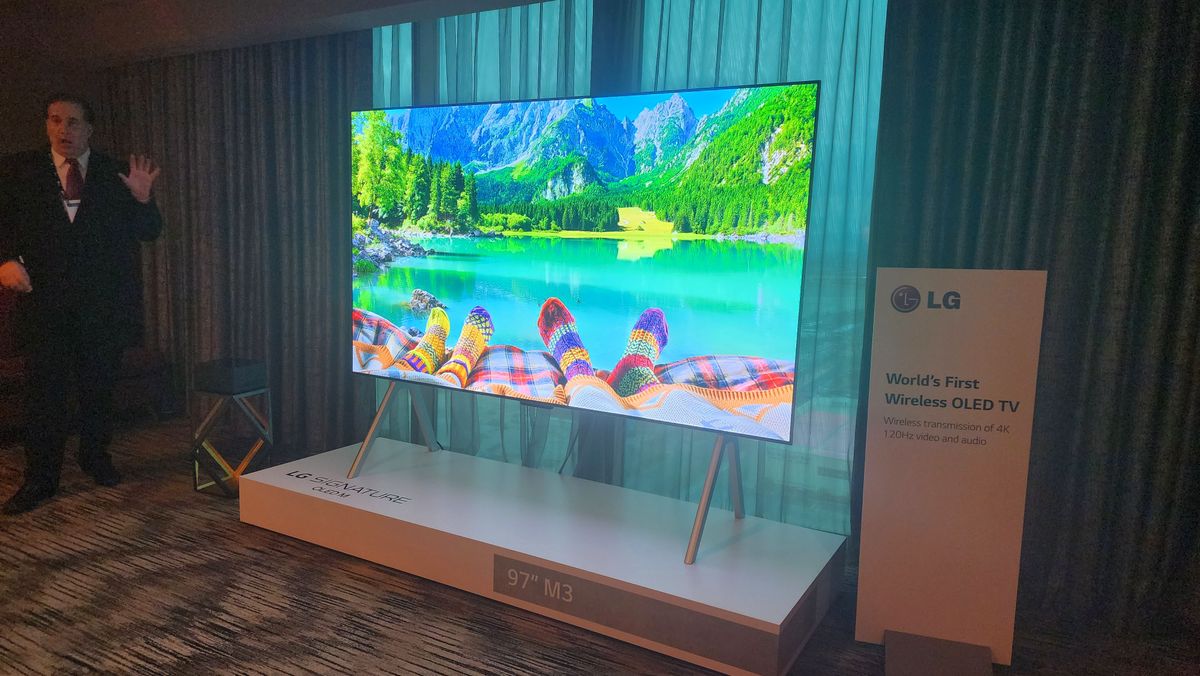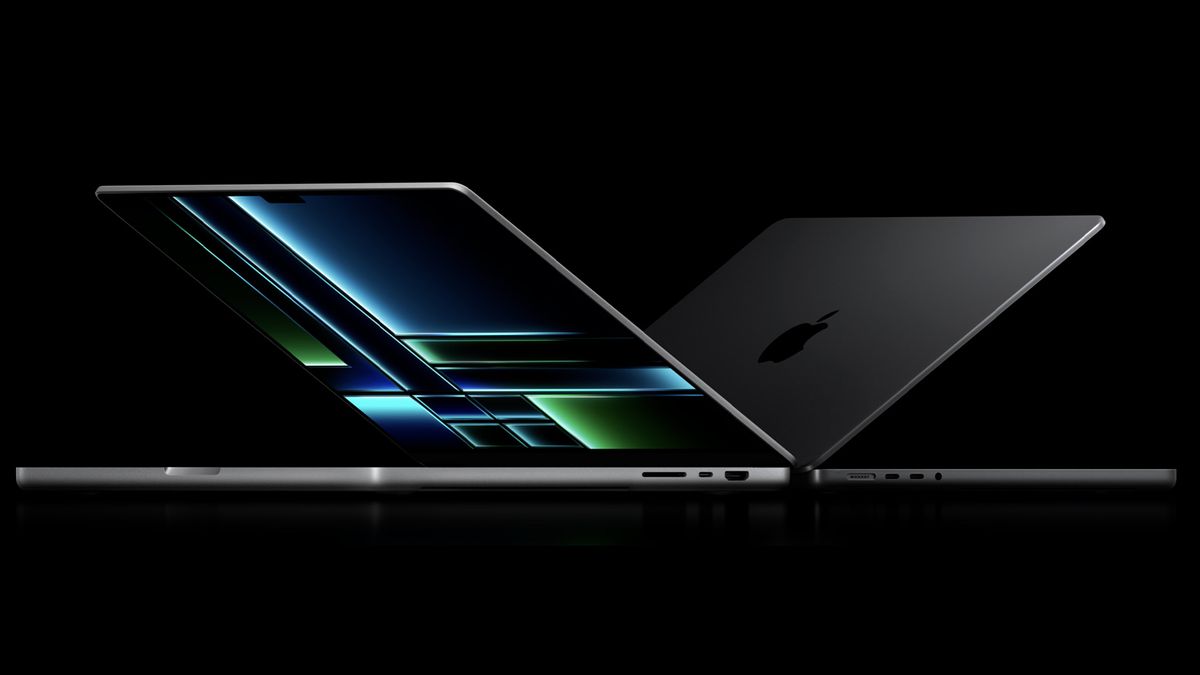Displace TV, one of the coolest products we’ve seen at CES 2023, is the world’s first wireless television. Yes, you read that correctly. That means you don’t have to deal with unsightly wires, but on top of that, Displace TV doesn’t have any ports either. Win!
However, unfortunately for Displace, it’s not the only company to debut a wireless TV this year. LG also announced the world’s first wireless OLED TV. Although Displace and LG TVs ditch the ugly cables, both use different tactics to achieve wireless television nirvana. How? Stick around to find out.
LG wireless TV
LG’s wireless TV, officially called Signature OLED M, is a 97-inch visual treat that boasts a 120Hz refresh rate with 4K OLED resolution.
How does it get video and audio delivered to the screen if it’s a wireless TV? Good question. The Signature OLED M is paired with a Zero Connect Box, a base station if you will, that must be placed within 30 feet of the TV, allowing you to hide it anywhere you like.
The Zero Connect Box is a black wireless AV box that features several I/O options, including three HDMI 2.1 ports, allowing you to plug in a wide range of peripherals like gaming consoles, cable boxes, and more.
A full 4K 120Hz picture with audio is transmitted to the display by leveraging a proprietary LG technology. “To ensure the seamless transfer of data from the box to the TV, the company developed an algorithm that instantly identifies the optimal transmission path,” LG said in a press release. This swanky technology also minimizes transmission errors by detecting changes in the environment (e.g., people walking by or dogs roaming the room).
LG suggests rotating and/or tilting the box’s antenna in a way that aligns with the TV’s location for maximum signal strength.
As a cherry on top, the Zero Connect Box features voice activation, so you can turn on and manage LG’s wireless TV with spoken commands. Gamers will love that this a G-sync-compatible TV (but I can’t help wonder if latency will be an issue). Plus, it features Dolby Vision and Dolby Atmos for ultra-vivid picture and immersive sound.
No word on pricing nor availability yet.

I got to see the wireless TV in all of its glory inside LG’s Las Vegas suite in Mandalay Bay, and I was impressed to see no glitching nor signal disturbances during the demonstration. And let me tell you, the picture on this thing is stunning with eye-catching colors that pop (see above).
Displace wireless TV
LG’s facing some stiff competition with the wireless 55-inch Displace TV. No, it’s not as massive as the Signature OLED M’s 97-inch monstrous display, but weighing less than 20 pounds, it’s a lighter option.

Displace TV is a battery-operated device, which uses four hot swappable Lithium-ion batteries for a total watch time of 180 hours. That’s nearly six hours a day for a month. Plus, the TV only needs two out of those four batteries to run at full power.
The greatest selling point, however, is that you don’t need to figure out how you’re going to mount it in your room. Leave the screws, hooks and TV stands alone. On the back of the Displace TV, you’ll find the company’s proprietary suction system that lets you hang it up anywhere you want, even a window, without any tools or other irksome bits and bobs.
Keep in mind, though, that the suction system runs on the batteries outfitted inside Displace TV, but don’t worry, you’ll get a notification when your batteries are running low and need to be recharged.
If 55 inches is too small for you, you can snap multiple TVs together for a larger display. For example, you can buy four Displace TVs for a whopping 110-inch display with 8K resolution.
I know what you’re wondering, “How does the wireless stuff work on this TV?” Similar to LG, it delivers picture and audio via a base unit that must be plugged into a wall. It’s reportedly the size of a PC tower, but I can’t say for sure because Displace didn’t showcase it at CES 2023.
It’s worth noting that, in addition to voice commands, owners can use gesture controls to manage Displace TV.
Displace TV costs $2,999 and is currently available for pre-order here.
Bottom line
Although LG and Displace are bragging about their televisions’ wireless capabilities, I’m more seduced by the fact that I don’t have to ruin my walls nor grab my tools to mount these TVs.
Plus, I don’t have to deal with the headache of hiding unsightly wires and cables. If this is the future of TV, I am here for it.








